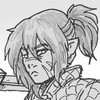HOME | DD
 kanyiko — De Caters N.IV
kanyiko — De Caters N.IV

#aircraft #airplane #aviation #biplane #earlybirds
Published: 2018-09-08 00:20:55 +0000 UTC; Views: 625; Favourites: 25; Downloads: 4
Redirect to original
Description
Brussels (Belgium), June 7th 2018A replica of the Voisin biplane flown by Baron Pierre de Caters (December 25th 1875 - March 21st 1944) stands on display in the Royal Museum of the Army and Military History in Brussels.
Pierre Henri Marie Amédée Baron de Caters de Bosschaert (to name him by his full name) was one of the first Belgian aviators as well as the first licensed Belgian pilot.
Born the son of Baron Pierre Joseph de Caters, a young Pierre inherited the title of Baron on his father' death in 1884. He was schooled as an engineer, but loved speed and cars, and owned a number of cars by the turn of the century, including a De Dion, a Daimler, a Vincke and a Snoeck Bolide. After commissioning a car of his own from the Liège arms factory (who also manufactured cars and motorcycles for a couple of decades), De Caters became a racing pilot in 1899. In 1901 he won the Grand Prix of Ostend, and in 1903 he participated in the Gordon Bennett Cup, where he was forced to retire shortly before the finish. In 1907 he won the Ardennes Circuit in Bastogne.
As a racing pilot, Pierre de Caters broke the world speed record three times, setting it to 122 kmh in 1901; 135 kph in 1903; and 156 kmh in 1904.
After attending a flying display in Ghent in 1908, where the French aviator and aircraft constructor Henry Farman demonstrated his biplane, De Caters took up flying, making his first flight at Issy-Les-Moulineaux, Paris, France on October 25th 1908. Ordering a Goupy-Voisin triplane aircraft, De Caters made the first flight by a Belgian over Belgium on November 30th 1908, however after a couple of tests he concluded the Goupy didn't suit him, and he purchased a Voisin biplane instead. In March of 1909 De Caters informed the Ministry of War that he would set up an aerodrome on the grounds of his domain; it swiftly became a center of interest for Belgium's early aviators. At this point de Caters even became the vice president of the Aero-Club d'Anvers. This didn't prevent him from returning to Paris in April to purchase his third aircraft, with which he started flying around April 20th 1909. In order to get the best results, de Caters spent a considerable amount of his wealth to purchase better engines. De Caters soon began his own aircraft factory in Bruges, while giving flying demonstration across the world. In August 1909 he departed for Germany, and during the 1909 Frankfurt Aeronautical Exhibition, De Caters set a number of German flight duration records, improving on both his own times and national records a number of times. On August 16th, he managed to set a flight duration record of 11 minutes; by his last flight on September 7th, he had improved this to 35 minutes. At the end of October 1909 he displayed his Voisin at the Antwerp Aviation Week, where his De Caters N.III is wrecked when it is caught by a crosswind.
By this time de Caters has already purchased his fourth aircraft, and with this aircraft he departs on a tour of a number of countries: arriving in Poland, he makes the first powered flight on Polish soil on November 16th 1909. After receiving Belgian Pilot's License no.1 on December 3rd 1909, he departs for Istambul where he again demonstrates his aircraft. Days later he makes the crossing for Egypt, where his December 3rd 1909 flight marks the first powered flight on the African continent.
One year later, de Caters joined a fellow aviator from Antwerp, Jules Tyck, in a journey to India, where both he and Tyck did a number of demonstrations in Calcutta (December 20th 1910), Bangalore (February 2nd 1911), and Secunderabad (February 16th-18th 1911). However, on his return to Belgium, de Caters ceases his involvement in aviation due to a number of circumstances: first of all, he misses a contract for the training of the pilots of the Belgian military. Soon afterwards, he decides to stop his involvement in the construction of aircraft; the flight school and the aircraft company at Bruges are taken over by the Bollekens brothers, who continue training pilots and building Farman biplanes for the Belgian military there.
At the outbreak of the First World War, Baron de Caters, then already close to his 39th birthday, decides to rejoin the military as a volunteer. As such he is appointed as the commander of the anti-aircraft units near Antwerp, before becoming the commander of a platoon of armoured cars. In 1915 he is appointed the head of the Belgian military aviation school at Étampes, France, which he leads until 1916 when he becomes involved in the acquisition of equipment for the Belgian military. He subsequently decides to concentrate on the fabrication of pressed coal fuel. Following the end of the War, he continues his career in the production of pressed coal fuel bricks, completely abandoning aviation. At the age of 68, Baron de Caters passes away in Paris, France in 1944.
The Brussels Air Museum made a replica of De Cater's No.4, basing it on the wreck of a Dalberd replica that they acquired from the Jean de Salis collection. While retaining much of the Dalbert replica's fuselage structure, the rebuild acquired a new set of wings, canards and tailplanes, as well as an original 1908 ENV-engine and propeller.
Related content
Comments: 3

Early aviators were a breed apart...
👍: 0 ⏩: 1



















